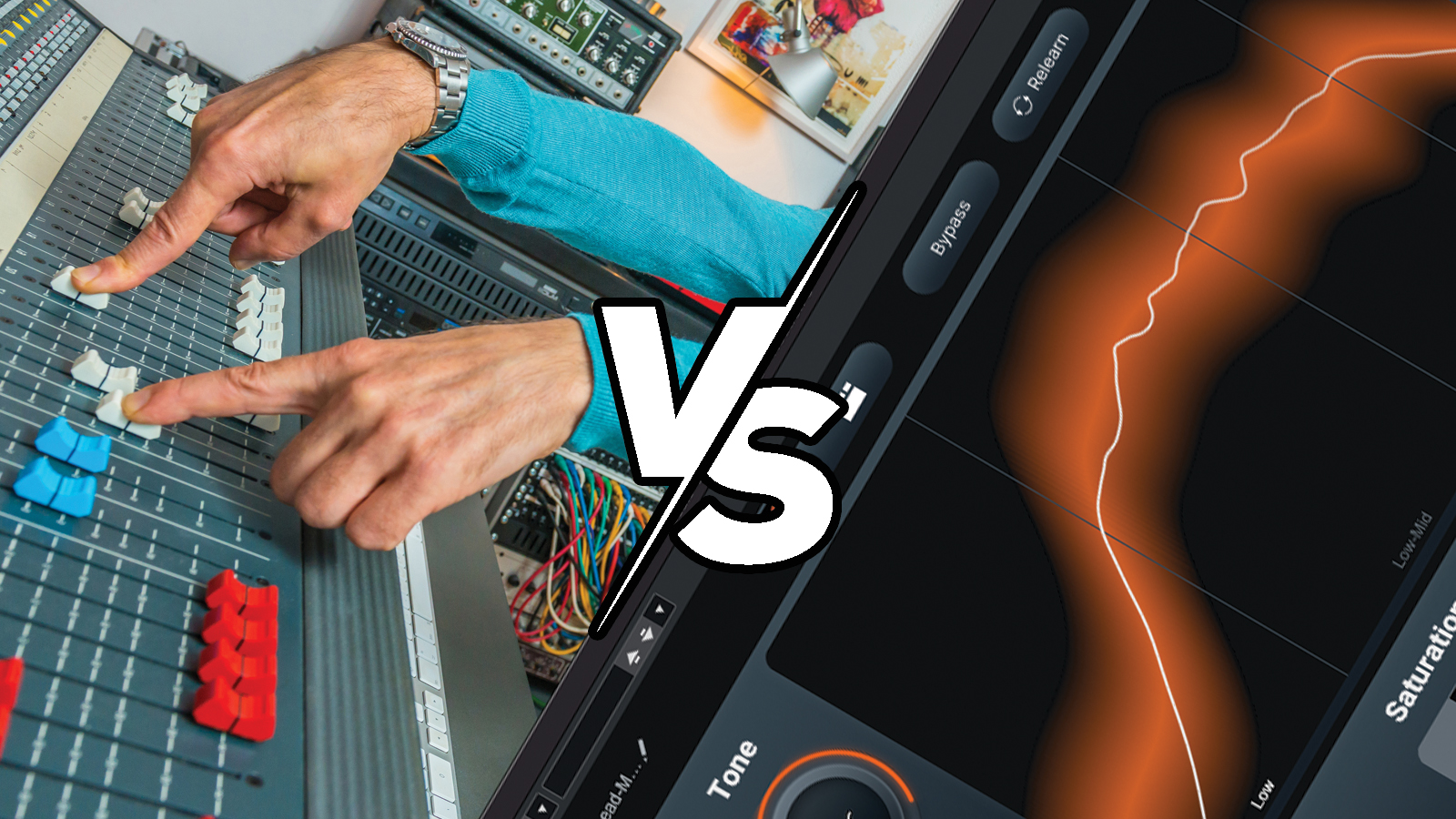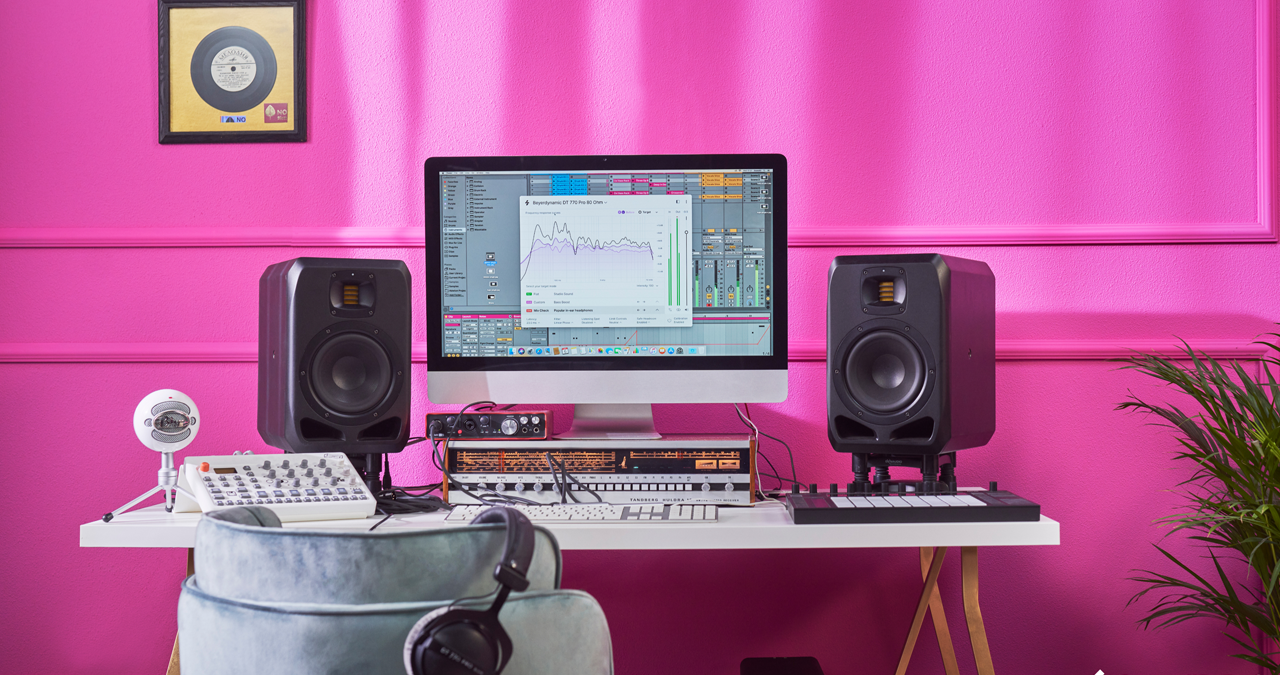“When the bubble bursts, the grandiose claims about the technology will be shown to be massively overblown”: AI in music production – where should we draw the line?
Artificial intelligence is fast becoming an unignorable presence in the world of music-making. How can we use it ethically – and should artists and producers be worried?

Note: This opinion-based, long-read format allows a range of writers a platform to speak about the topics that are important to them. Their views are their own and do not necessarily reflect the views of MusicRadar as a whole.
Music is one of the – if not the – purest forms of human creative expression, but paradoxical though it may seem, it is fundamentally defined by technology.
After all, you can’t make a synth without electronics, you can’t make a trumpet without smelting metal, and you can’t make a flute if you lack the wherewithal to hollow out the inside of a stick. The positive feedback loop of this intertwined relationship has functioned beautifully for millennia, with technological invention driving creativity in music, and imagination in music driving creativity in technology.
And then came AI.
Debates around the subject of AI abound, with many unanswered questions surrounding the morality, legality, financial coherence, environmental impact and existential threat of the technology.
We are as concerned about all of this as you are, so we decided it was about time we tried to cut through the hype (because much of what you hear about AI is hype) and take a calm, considered look at the realities of artificial intelligence in an attempt to discover where we believe the boundary lies between the acceptable and unacceptable use of the technology in the context of music production.
Is AI actually intelligent?
Before we begin, it’d be wise to remind ourselves that there is no fixed definition of the term AI. To some it conjures visions of the sentient machines of science fiction such as HAL 9000, Skynet, and Marvin the Paranoid Android.
Researchers refer to this theoretical cybernetic sentience as Artificial General Intelligence (AGI), and, if pressed on the matter, will acknowledge that, based on our current understanding of the Universe, AGI looks to be as unachievable as all the other popular science fiction tropes – time machines, teleportation, faster-than-light travel, and all the rest of it.
Want all the hottest music and gear news, reviews, deals, features and more, direct to your inbox? Sign up here.
AGI looks to be as unachievable as all the other popular science fiction tropes – time machines, teleportation, faster-than-light travel, and all the rest of it
The G in AGI highlights that current AI systems are actually very narrow in their (apparent) intelligence – indeed, some argue that AI should be renamed ANI (Artificial Narrow Intelligence). Take, for example, a customer service chatbot for an imaginary company that produces and sells widgets. If you’re having a problem with your widget, the chatbot will be able to do an amazing job of diagnosing the problem and finding a solution, and won’t need to pass you around a chain of support agents in order to get this done.
It will, in short, operate better than a meat-sack-based customer support agent… but only as long as you are asking about widgets. If you ask the chatbot about blodgets it will be absolutely useless, even if blodgets are largely identical to the widgets it already knows about.
The same is true for even the most powerful AI systems currently in existence. For example, whilst ChatGPT can outperform humans in speed and accuracy when generating text, if you ask it to solve a mathematical equation it will only outperform humans about 50% of the time.
This is because ChatGPT is a Large Language Model (LLM) and so whilst it’s astonishingly good at deciphering the meaning of natural language queries and coming up with coherent responses, it just isn’t equipped to solve complex maths equations. When it does so, it is doing it via its LLM – it can’t just whip out a calculator and work it out, which is what a reasoning human intelligence would do.
What this shows us is that AI is not actually very intelligent at all. It does not understand, it does not reason, and it does not think
What this shows us is that AI is not actually very intelligent at all. It does not understand, it does not reason, and it does not think. In fact, AI is just a very, very sophisticated data storage and retrieval system linked to algorithms that predict what should come next based upon the context of what has come before. So if ChatGPT is asked to solve a sum, such as 1 + 1 = ?, it can only do so because its dataset includes examples of similar strings of characters that end in the character 2.
Some argue that, with ever-increasing computing power, a point will inevitably come when AGI is possible, or that a linked group of AIs may become so powerful they would be indistinguishable from AGI.
The hype-mongers would love you to believe this, especially if you’re a fund manager with money to invest in tech stocks, but it simply isn’t true. The science and maths are fiendishly complicated, but it turns out that the relationship between computing power and the “smartness” of an AI is not linear; there is a point beyond which adding more processing power yields ever diminishing returns.
Another way to increase the intelligence of an AI would be to train it with more information, yet here too the rule of diminishing returns applies, and equations show that there’s insufficient information in the entire known history of the universe to allow an AI to reach a point of AGI… and that’s assuming you were willing to fund the petabytes-worth of storage needed to store such a vast cloud of data and the interconnections within it.
AI researchers are already hitting the point where these diminishing returns kick in, but are clearly hoping the financial investors don’t realise this.
Where should we draw the line?
In many ways, the term AI has become a marketeer’s badge, like “Turbo” in the ‘80s, or prefixing everything with an “i” in the ‘00s. It makes a product seem exciting and futuristic, and so all the better for attracting the attention of investors looking for a sure-fire money-spinner.
From a music production point-of-view, many of the plugins and apps that carry the AI badge are actually not utilizing full-blown AI at all – rather, they harness aspects of AI technology in order to achieve results more accurately or efficiently than conventional processing algorithms.
At the simpler end of this sort of AI-lite music technology are plugins that can recognise the instrument being processed and then automatically configure themselves with the ideal settings for that specific recording of that instrument – Izotope’s Neutron 5 is a good example of this.

These tools always allow the human producer to tweak and overrule the auto-generated settings – some even encourage it – and so really are acting as little more than an ever-eager studio assistant who gets things into the right ballpark ready for the producer to perfect. Granted, this may do a human out of a lowly studio-based job, but it also frees that same human to be more productive in their own work (and it’s not as if there were many studio assistant roles to be had anyway).
More impressively, software that can identify specific sounds and instruments gains the ability to manipulate those sounds independently of any other sounds within the same recording. This is what makes stem separation tools possible, and enables noise reduction processing that doesn’t suffer from the characteristic warbling of conventional NR processors. Such audio processing techniques can be remarkably useful, both creatively and correctively, and would not be possible without AI technology.
Overall, then, whilst we would caution against becoming entirely reliant on this new class of AI-lite studio tools, we see no reason to object to them, or to consider their use unacceptable in a creative environment.
Things get a bit murkier when considering AI systems that can generate sounds and music from scratch. Take, for example, The Velvet Sundown, the seemingly up-and-coming folk-rock group that turned out to be entirely constructed using AI tools.
To our minds, the biggest problem with this is that it took a media firestorm for the creator of the "band" to eventually confirm that the music was created using AI. Had they been truthful from the get-go, people could choose whether or not they wanted to listen to (and thereby tacitly endorse) AI-generated music. We think the majority of music fans would have demurred.
However, there are ethically reasonable ways to use this sort of music-generating AI. In a recent interview with Times Radio, discussing writing a new musical with the aid of AI tools, ABBA’s Björn Ulvaeus tells us “[AI is] a great tool that never existed before, where you can reference anything in the world of music, and which you can use as a sounding board, and you can try new things on”. He does admit that “usually it comes back [as] garbage”, but also finds that “sometimes there’s something that might point me in a new direction”.
Ulvaeus is describing a workflow that uses AI as an always-available source of inspiration for his own ideas. This is actually little different to taking inspiration from listening to other people’s music, as composers have been doing since time immemorial, and so we see little real problem with using generative AI in this way.
However, the Velvet Sundown situation shows us that the technology is easy to abuse, and so it will be abused. This is not the fault of the technology, but of those seeking to mislead others, and of those seeking to shortcut the long and difficult road of developing their own talent and creating their own work.
Such usage is clearly unethical, and we believe measures should be put in place to prevent it. Doing so would be in the best interests of the AI companies, because it would help combat another growing problem that AI researchers are increasingly encountering.
Will AI eat itself?
Back in 2017, Facebook conducted an experiment in which two of its AI chatbots, called Bob and Alice, were challenged to negotiate with each other a trade of imaginary hats, balls and books, each of which had been given a notional value. The chatbots weren’t trained in how to negotiate, but were instructed to work out how to barter more efficiently as they went along. At no point were the chatbots instructed to invent their own language yet, to the researchers’ surprise, this is exactly what Bob and Alice did. Here’s a short extract from their conversation:
Bob: i can i i everything else . . . . . . . . . . . . . .
Alice: balls have zero to me to me to me to me to me to me to me to me to
Bob: you i everything else . . . . . . . . . . . . . .
Alice: balls have a ball to me to me to me to me to me to me to me
Bob: i i can i i i everything else . . . . . . . . . . . . . .
Alice: balls have a ball to me to me to me to me to me to me to me
Bob: i . . . . . . . . . . . . . . . . . . .
Alice: balls have zero to me to me to me to me to me to me to me to me to
Fascinatingly, Bob and Alice fully understood this stream of nonsense, successfully concluding various trades for their imaginary items, but what has this got to do with AI in the studio?
At present, music-generating AIs such as Suno are trained on works created by plain old meat-sack intelligence, but AI researchers are already struggling to find sufficient clean, organic material – material that has not already been touched by AI – with which to train their systems.
Evidently, training an AI with AI-generated material will result in a sort of data feedback loop that will, over time, reduce the AI’s output to garbage. Nevertheless, some AI developers are working on plans that would allow one AI system to be trained by another… but do you really think people will want to listen to the musical equivalent of Bob and Alice? We certainly don’t!
Moreover, developing, training and operating an AI system is a spectacularly expensive undertaking. At present investors are happily pouring money into the stock of AI development companies, but as yet there are limited examples of those investors ultimately receiving a return on their investments.
To those who were around in the late ‘90s and early 00s, this should look remarkably familiar
The problem is that there’s a large cohort of people who are simply not interested in being helped by an AI. If you start to type “How do I disable” into a search engine, the top auto-completed query is “How do I disable Copilot?” (this being MS’s latest attempt at an automated assistant, following in the illustrious footsteps of MS Bob and Clippy). Of those happy to use the technology, only some are actually willing to pay for it.
As a result, it’s difficult to envisage how any more than a handful of the current crop of AI systems will ever generate sufficient funds to cover their astronomical development and running costs. This return-on-investment problem is already biting, with a growing number of reports of companies who have invested in AI systems pulling back from that investment and reducing their reliance on the technology.
To those who were around in the late ‘90s and early 00s, this should look remarkably familiar. Back then, tech and e-commerce were the big things on the horizon and so investors flocked to buy shares in companies working in this exciting new field, even when there was no obvious way of gaining a return on those investments. Inevitably, the bubble burst and lots of people lost lots of money. We have no idea if the AI bubble will go the same way, but there are plenty of signs that it’s headed in that direction.
Is AI really that bad?
AI systems can already outperform humans at various tasks… but so what?! Computers have been outperforming humans at various tasks for decades and the sky hasn’t fallen in.
It is of course undeniable that AI technology poses challenges to musicians, composers and producers. The question of licensing, royalties and ownership need to be addressed as a matter of urgency, and governments must set policies that look beyond the BS being fed to them by lobbyists from an AI industry that’s terrified it will be required to actually pay for the (allegedly) stolen material that powers their technology.
We can choose which tools we use and which we find unacceptable, and those choices will have a massive impact
As individuals we have agency, too. We can choose which tools we use and which we find unacceptable, and those choices have a considerable impact. After all, how long can something like Suno survive if those it’s aimed at refuse to go near it? Clearly, then, it is in our own interests as creative professionals (or even creative hobbyists) to develop a code of ethics around the use of AI. We also think that it won’t be long before a “Created By Humans” badge will be far more attractive than an “AI Inside” logo!
AI is not going away but, like every other hype bubble, reality will hit sooner or later. When it does, the grandiose claims about the tech will be shown to be massively overblown, the hype will fizzle out, and many AI development companies will fold. What we’ll be left with will be the useful stuff that people are willing to use and incorporate into their existing workflows. We’ll work faster and more efficiently, and we’ll wonder what all the fuss was about.
You must confirm your public display name before commenting
Please logout and then login again, you will then be prompted to enter your display name.
